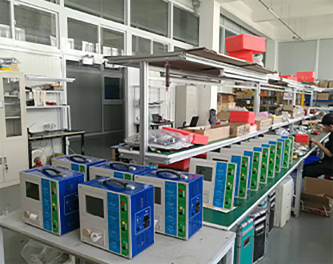 English
English



-
 Afrikaans
Afrikaans -
 Albanian
Albanian -
 Amharic
Amharic -
 Arabic
Arabic -
 Armenian
Armenian -
 Azerbaijani
Azerbaijani -
 Basque
Basque -
 Belarusian
Belarusian -
 Bengali
Bengali -
 Bosnian
Bosnian -
 Bulgarian
Bulgarian -
 Catalan
Catalan -
 Cebuano
Cebuano -
 China
China -
 China (Taiwan)
China (Taiwan) -
 Corsican
Corsican -
 Croatian
Croatian -
 Czech
Czech -
 Danish
Danish -
 Dutch
Dutch -
 English
English -
 Esperanto
Esperanto -
 Estonian
Estonian -
 Finnish
Finnish -
 French
French -
 Frisian
Frisian -
 Galician
Galician -
 Georgian
Georgian -
 German
German -
 Greek
Greek -
 Gujarati
Gujarati -
 Haitian Creole
Haitian Creole -
 hausa
hausa -
 hawaiian
hawaiian -
 Hebrew
Hebrew -
 Hindi
Hindi -
 Miao
Miao -
 Hungarian
Hungarian -
 Icelandic
Icelandic -
 igbo
igbo -
 Indonesian
Indonesian -
 irish
irish -
 Italian
Italian -
 Japanese
Japanese -
 Javanese
Javanese -
 Kannada
Kannada -
 kazakh
kazakh -
 Khmer
Khmer -
 Rwandese
Rwandese -
 Korean
Korean -
 Kurdish
Kurdish -
 Kyrgyz
Kyrgyz -
 Lao
Lao -
 Latin
Latin -
 Latvian
Latvian -
 Lithuanian
Lithuanian -
 Luxembourgish
Luxembourgish -
 Macedonian
Macedonian -
 Malgashi
Malgashi -
 Malay
Malay -
 Malayalam
Malayalam -
 Maltese
Maltese -
 Maori
Maori -
 Marathi
Marathi -
 Mongolian
Mongolian -
 Myanmar
Myanmar -
 Nepali
Nepali -
 Norwegian
Norwegian -
 Norwegian
Norwegian -
 Occitan
Occitan -
 Pashto
Pashto -
 Persian
Persian -
 Polish
Polish -
 Portuguese
Portuguese -
 Punjabi
Punjabi -
 Romanian
Romanian -
 Russian
Russian -
 Samoan
Samoan -
 Scottish Gaelic
Scottish Gaelic -
 Serbian
Serbian -
 Sesotho
Sesotho -
 Shona
Shona -
 Sindhi
Sindhi -
 Sinhala
Sinhala -
 Slovak
Slovak -
 Slovenian
Slovenian -
 Somali
Somali -
 Spanish
Spanish -
 Sundanese
Sundanese -
 Swahili
Swahili -
 Swedish
Swedish -
 Tagalog
Tagalog -
 Tajik
Tajik -
 Tamil
Tamil -
 Tatar
Tatar -
 Telugu
Telugu -
 Thai
Thai -
 Turkish
Turkish -
 Turkmen
Turkmen -
 Ukrainian
Ukrainian -
 Urdu
Urdu -
 Uighur
Uighur -
 Uzbek
Uzbek -
 Vietnamese
Vietnamese -
 Welsh
Welsh -
 Bantu
Bantu -
 Yiddish
Yiddish -
 Yoruba
Yoruba -
 Zulu
Zulu
Kinematic Viscosity Measurement Instrument for Accurate Fluid Analysis and Testing
Understanding Kinematic Viscosity Testers A Comprehensive Overview
Kinematic viscosity is a critical property of fluids that describes their internal resistance to flow. Understanding and measuring this characteristic is essential in various industries, including petroleum, paints, food processing, and chemical manufacturing. Kinematic viscosity testers play a vital role in determining this property, providing crucial data for quality control and material selection. In this article, we will explore the principles behind kinematic viscosity, the importance of kinematic viscosity testers, and the various types available in the market.
What is Kinematic Viscosity?
Kinematic viscosity is defined as the ratio of dynamic viscosity to fluid density. It is measured in units of square meters per second (m²/s) or more commonly in centistokes (cSt). The kinematic viscosity of a fluid changes with temperature; as the temperature increases, the resistance to flow generally decreases, resulting in lower viscosity readings.
This property is significant because it affects the behavior of fluids under various conditions, including flow rates in pipelines, the performance of lubricants in machinery, and the stability of emulsions in food products. Therefore, accurate measurement is essential for ensuring product performance and compliance with industry standards.
Importance of Kinematic Viscosity Testers
Kinematic viscosity testers are vital tools used to measure the viscosity of liquids accurately. The importance of these testers can be summarized in several key points
1. Quality Control In industries such as petroleum refining, the quality of the final product can greatly depend on its viscosity. Kinematic viscosity testers help manufacturers ensure that their products meet specific viscosity standards.
kinematic viscosity tester

3. Regulatory Compliance Many industries are subject to regulations that require compliance with specific viscosity standards, making accurate measurement essential for legal and safety reasons.
4. Troubleshooting Assessing the viscosity of a fluid can help identify issues within a system, such as changes in fluid properties or contamination, enabling quicker resolutions.
Types of Kinematic Viscosity Testers
Kinematic viscosity testers can be classified into two main categories capillary viscometers and rotational viscometers.
1. Capillary Viscometers These are often the traditional choice for measuring kinematic viscosity. A liquid sample is allowed to flow through a small-diameter tube (capillary) under the influence of gravity. The time taken for a specific volume of liquid to pass through the tube is measured, and this time is used to calculate the kinematic viscosity. Common types of capillary viscometers include the Ubbelohde and Ostwald viscometers. These testers are typically more accurate for low-viscosity liquids.
2. Rotational Viscometers These devices measure viscosity by rotating a spindle in the liquid sample and recording the torque required to maintain a constant speed. This measurement can be converted into viscosity values. Rotational viscometers are versatile and can measure a wider range of viscosities, making them suitable for more viscous fluids. They are also more convenient for automated testing and continuous monitoring.
Conclusion
In conclusion, kinematic viscosity testers are indispensable tools in various industries that rely on precise measurements of fluid viscosity. By enabling quality control, facilitating formulation development, ensuring regulatory compliance, and assisting in troubleshooting, these testers play a pivotal role in maintaining product quality and performance.
As industries continue to evolve and demand more efficient processes, the development of advanced kinematic viscosity testing technologies will likely enhance measurement accuracy and convenience. Understanding the significance of kinematic viscosity and how to measure it effectively will undoubtedly benefit engineers, researchers, and manufacturers alike, ensuring that products meet the high standards required in today’s complex market.
-
Testing Equipment Industry Sees Major Advancements in 2025: Smart & Precision Technologies Lead the WayNewsJun.06,2025
-
Applications of Direct Current Generators in Renewable Energy SystemsNewsJun.05,2025
-
Hipot Tester Calibration and Accuracy GuidelinesNewsJun.05,2025
-
Digital Circuit Breaker Analyzer Features and BenefitsNewsJun.05,2025
-
Benefits of Real-Time Power Quality Monitoring Devices for Industrial EfficiencyNewsJun.05,2025
-
Earth Fault Loop Testing in High-Rise Building Electrical SystemsNewsJun.05,2025



